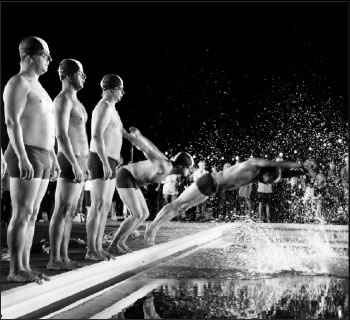International rep, local identity remain elusive
BY TRAV S.D.
Like a New York version of a Phoenix, the Tribeca Film Festival was born out of the ashes of a Tribeca that is no more. Located just yards from the pile of rubble that had once been the World Trade Center, seven years ago Robert DeNiro’s Tribeca Film Center was uniquely positioned to be an economic engine in a neighborhood that was dangerously adrift. This year, as the Festival prepares to launch its eighth incarnation, it does so at a time when the entire country is once again operating under a cloud — this time a fiscal one.
The festival’s response to the global economic crisis has been twofold. First, an unmistakable tightening of the belt. The Tribeca Film Festival has downsized in a big way this year, presenting a grand total of 85 films, which is a little over half the number it screened in 2007, its biggest year. Secondly, in an echo of 2002, the festival’s launch year, the programmers have made a conscious effort to soothe the city’s troubled spirit.
“It’s not so much an effort to be escapist, as it is to be inspiring, to present crowd pleasers,” says TFF Director of Programming David Kwok, who has been with the Festival since its very first year, following five years at the New York LGBT Festival. Kwok gives as an example “The Burning Season,” a documentary by Australian director Cathy Henkel about ecological devastation in Indonesia. “The film is about taking progressive action,” states Kwok, “It’s not just about picking apart what’s wrong.”
Other examples Kwok cites are “The Swimsuit Issue,” a Swedish film about the forming of an all-male synchronized swimming team, and “A Matter of Size,” an Israeli comedy about a group of plus-sized gentlemen who decide to drop their weight loss regimen and take up sumo wrestling. And, of course, one can’t overlook the festival’s most heavily publicized premiere, “Whatever Works,” the new Woody Allen film starring Larry David (the director’s first picture with an American setting in five years).
Other notable comedies in the line-up include “Black Dynamite,” Scott Sanders’ Blaxploitation spoof; “The Wild and Wonderful Whites of West Virginia,” produced by Johnny Knoxville and Jeff Tremaine of “Jackass” fame; and “In the Loop,” based on the BBC comedy series “The Thick of It,” featuring Steve Coogan and James Gandolfini.
The restorative tone (if not the lightness) of this year’s festival inevitably recalls 2002, when the Tribeca Film Festival was in its infancy. “Of course, the roots of the festival date back to 9-11,” says Kwok, “The first year was very seat-of-the-pants, and the whole goal was to get everyone back downtown. People came out of curiosity the first few festivals, with an attitude of ‘What are they going to do?’”
The festival programmers’ answer turned out to be: you tell us.
“This is a very interactive festival,” says Kwok, “You have to work with what’s available. You can’t force any direction, you have to work organically. Then you can group films together based on what submissions you get. For example, for a number of years [Iraq and Afghanistan] war themes ran through the festival. That’s waned somewhat this year.”
An exception to this year’s lighter direction and a holdover from the ‘war years” cited by Kwok is a documentary entitled “Fixer: The Taking of Ajmal Naqshbandi” — which chronicles a Taliban kidnapping of a local journalist liaison in Afghanistan.
“But,” Kwok asserts, “Things have changed in the past several years. It’s still the same festival, but we’ve succeeded in the original mission. The festival gets better every year. We’ve grown every year, and are continuing to grow.”
While this may not be true in terms of the festival’s actual size (the number of films and venues is actually smaller), it is certainly true from the perspective of audience. From 35,000 ticket buyers the first year, the festival attracted 155,000 in 2008. Attendance at street fairs, outdoor screenings, and other free events swells the number to close to half a million. These figures dwarf those of several prestigious and better established festivals such as Sundance, Cannes and Venice, even if Tribeca still lacks the heavy duty name recognition.
“We’re trying to be international, but we’re not yet at the level of Sundance or Cannes,” admits Kwok, “On the other hand, things are changing for all film festivals worldwide. It will be interesting to see what happens in the industry over the next five to ten years in terms of how films are made and exhibited at festivals. Are there ways to take it beyond attending a literal cinema? While I believe strongly that the art of cinema is about bringing an audience together in one physical space, given the technological options that have recently become available, what are the possibilities? Should screenings happen online?”
Despite the economic downturn, the leaner, meaner Tribeca Film Festival continues to enjoy millions of dollars in financial support from sponsors like American Express, Heineken and DirectTV this year. As long as those companies stay healthy and willing to continue their support, and as long as that also remains true of ticket buyers, some version of the festival seems likely to prosper into the future. Kwok’s aspirations seem hopeful but measured: “We’ve grown and we’ll continue to grow. I’m just hoping for another good year.”

























